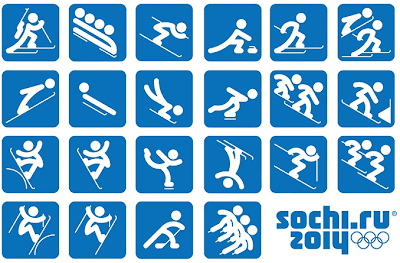Just over 3 weeks away from the Sochi Olympics my thoughts turn to the opening ceremony. With all the controversy surrounding President Putin’s anti-gay laws it’s a virtual certainty that few lgbt performers will be identified at either the opening or closing ceremony. Putin refuses to accept that any famous Russian is, or was, gay, even Tchaikovsky or Nureyev. So let’s rub Putin’s nose in it by celebrating the contributions lgbt music has made to the Olympic Winter ceremonies.
Olympic opening and closing ceremonies were fairly formal affairs until relatively recently. The only music likely to be heard were the Olympic and national anthems, and music for the entry of the teams. The big spectaculars familiar to us today only really entered the Olympics at the 1976 Montréal games. The Montréal opening ceremony is famous as being the first event where the Mexican wave, a staple event in stadiums ever since, was filmed. Opening ceremonies until Montréal consisted of the welcoming segment, athlete’s parade, regional/national band/music, official opening, oaths, and entry of the torch and lighting of cauldron. Montréal introduced the pure entertainment segment of inflated dinosaurs and giant eggs which opened to reveal dancing baby dinosaurs. Interestingly, pre-Montréal opening ceremonies had a parade of athletes OUT of the stadium after the cauldron was lit so that the “entertainment”, usually a national or regional dance, could begin. Moscow
Winter ceremonies were shorter and simpler due to their being held in freezing cold open air venues. The 1968 Grenoble Winter Olympics moved the closing ceremony to an indoor ice arena. This led to the incorporation into the ceremony of the traditional ice skating gala performed by the Olympic medallists and more music. These galas were the main entertainment right up to Sarajevo
Most of the lgbt Olympic figure skating medallists performed at the closing ceremony ice galas. Complete records of performers (let alone which music they skated to) are pretty rare, but the first known gay figure skater at the closing gala could well have been silver medallist Robbie Robertson in Cortina d’Ampezzo in 1956. It’s virtually certain that Ondrej Nepela, as the new Olympic champion, performed at the gala in Grenoble
Moving on to musical performances proper it seems that 1960s television influenced the ceremonies the most. Broadcasting rights, particularly from American companies, meant that ceremonies had a bigger audience and something more spectacular needed to be produced. What audiences wanted was a show, and that’s what Olympic ceremonies became, growing bigger every time, with more and more big-name stars, and a virtually continuous musical sound track.
Well-known national and international performers have appeared in ceremonies since the 1960 Squaw Valley Winter Olympics. It wasn’t until the summer games in Los Angeles Calgary
We had to wait until Salt Lake City in 2002 before the winter closing ceremony got more than one or two big name performer (Kiss, Cristina Aguilera, Harry Connick jr., Bon Jovi, Gloria Estefan, Earth Wing and Fire, and Donny and Marie Osmond, and many others). Most of the lgbt involvement was backstage, mainly choreographic and design, but the honour of singing the American national anthem went to the boyband N’Sync with gay band member Lance Bass.
Turin 2006 had fewer performers but the closing ceremony ended with Ricky Martin. The parade of athletes at Turin
And that brings us up to date, more or less, with Vancouver 2010. The Director of Choreography for both Olympic ceremonies was the openly gay Artistic Director of the Alberta Ballet, Jean Grand-Maître. His main personal involvement was choreographing the sequence to gay composer Samuel Barber’s “Adagio for Strings”. Immediately following this was a rock-folk section which involved several rock fiddlers, the climax being openly gay fiddler Ashley MacIsaacs. The opening ceremony ended with the return of k d lang singing “Hallelujah” during the symbolic release of the doves.
Before we know it the Sochi


No comments:
Post a Comment